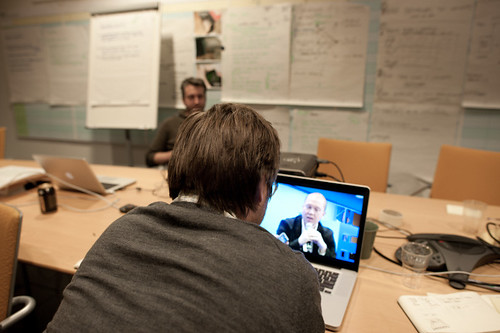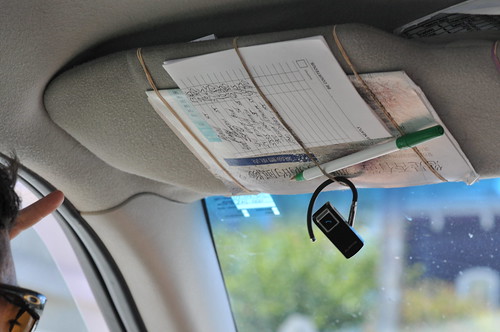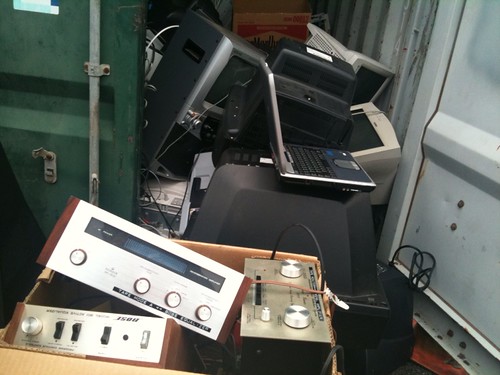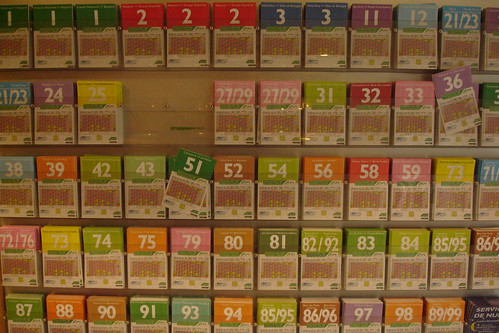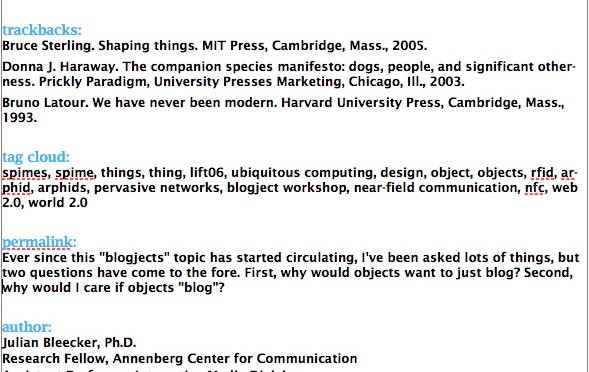A week spent last in the Nordic EU discovering the knots and twists and snarls and kinks of the imbroglio that goes along with executing on damn good design. On the one hand there was the work of workshops meant to work *upon the work; on the other hand, there are the traces that appear as — if illuminated by forensic investigators UV light — the trails of interconnected relationships, goals, aspirations, roadblocks, paths of hope, begrudging words, encouraging words, optimistic personalities and personality disorders, cues and clues as to how things work, or how they do not; who talks to who, and who does not; where things can get done, and where they will not, despite everything. Very intriguing. Certainly not unusual activities; just the analysis and awareness that comes with trying to understand, and that from the perspective of a science-technology-studies kind of person. It’s like being inside a Latourian analysis of the making of things. I should draw a map.
Continue reading Weekending 12122010: Clarity via Complexity
Tag: Latour
Five Advantages of The Concept of "Design"
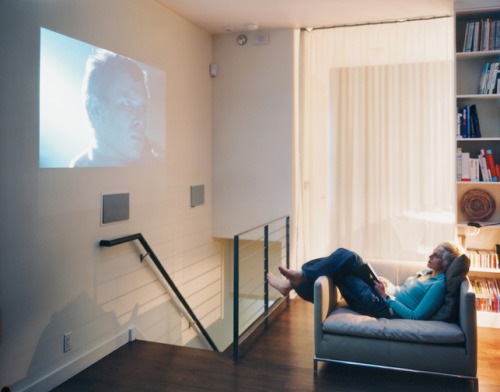
The Unhappy Hipster site has the tag line “It’s Lonely In The Modern World” dryly shifting design toward self-mocking irony. Perhaps a kind of denaturing of the sublime intoxication home/interior/architectural design was once able to effect. Seasoning this with Latour, we might wonder if there ever was a modern world and if there were not — have we ever been lonely?))
I read — closely, but not obsessively — this essay by Bruno Latour that was delivered as a keynote at the Networks of Design meeting of the Design History Society in 2008. I pretty much read whatever Latour writes, and listen to whatever he discusses in lectures where available. Mostly because he can be insightful while also being funny, and there aren’t too many philosophers who can make that claim. But also because I find his work mostly relevant, or I make it relevant to this ongoing project of understanding design and comprehend how design is a way to circulate and create knowledge through the materialization of ideas. ((The bedrock of this project is a bit of science-technology studies, which is how I came across Latour some decade or so ago, a hobbled appreciation of actor-network theory, and my infantile understanding of the questions surrounding this “object-oriented ontology” thing.))
So, when Latour has an essay that proposes *a few steps toward a philosophy of design, I figure I should give it a look-see.
The Week Ending 291210
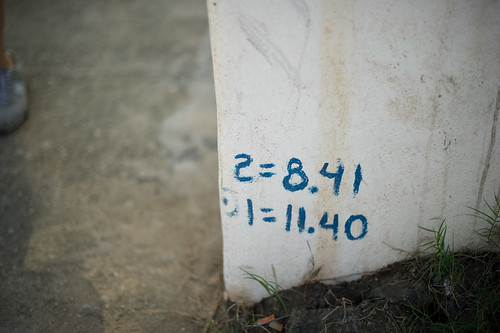
Well, maybe weeknotes are from the *week ending* but posted at the *week commencing*. One advantage of being one’s own blog boss, I suppose.
It was a decidedly *quick* week for some reason — perhaps because the Laboratory’s brother was visiting these last couple and action, thinking and events seem to accelerate the time. There was plenty of discussions of stories and filmmaking, which ties nicely into what *must* happen this month: the re-making of several short (30 seconds or so) of this visual design fiction stories meant to communicate some of our principles of Trust as embodied in some props/prototypes. This proves quite creatively engaging and challenging.
There was a pleasant slaloming conversations with the curious and effervescent Natalie, discussing the Latourian design sensibilities and the ways that debates and conversations embed themselves with artefacts. It was lovely to have this chat, if only to begin trying out the various *props* that we’ve been making that are exemplars themselves of these arguments/theories/perspectives. The question remains — what is new here, as an argument? It was encouraging to here Natalie’s excitement and the geneology of this sort of thinking, reaching back to here canonical Live Wire and Rich Gold’s Evocative Knowledge Objects (to which the Theory Object owes everything.)
This decanted into thoughts on a Latour essay presently at desk side.
The third connotation of the word design that seems to me so significant is that when analyzing the design of some artefact the task is unquestionably about meaning — be it symbolic, commercial, or otherwise. Design lends itself to interpretation; it is made to be interpreted in the language of signs. In design, there is alwas as the French say, un dessein, or in Italian, designo. To be sure, in its weakest form design added only superficial meaning to what was brute matter and efficiency. But as it infiltrated into more and more levels of the objets, it carried with it a new attention to meaning.
[[A Cautious Prometheus? A Few Steps Toward a Philosophy of Design (with Special Attention to Peter Sloterjdijk. Bruno Latour]]
[[And special sideways inspiration from Karen, whose present reading/thinking I seem to be accidentally following alongside.]]
And then, I was thinking about Trust in this context and this precise basis for the process of *embedding* the sensibilities and sensitivities of Trust as a design practice. More as this idea develops.
There was a round of planning for future projects at the Nokia Design Strategic Projects studio, which meant thinking about what from Trust moves forward and in which ways and by what means. Similarly, we are beginning to share Trust. And wondering — to whom and to what ends? I am intrigued by this — how do you circulate ideas and with what goals so you know — in a more actionable way — how the ideas materialize and create other goals, especially within such a byzantine organization. This, I think, is one of the larger 2010 *professional* goals, I suppose (seeing as I have not really captured what those might be yet — bit tardy on that objective — I like to have New Year’s goals rather than New Year’s resolutions) — how to communicate ideas such as these, do so without PowerPoint and do so in such a way that you snap people out of a corporate stupor, or whatever it is — and do more than just scrape a bit of paint on the battleship. Rather, help set a different course heading.
Showing And Telling: Some Notes On Visualisation and Cognition
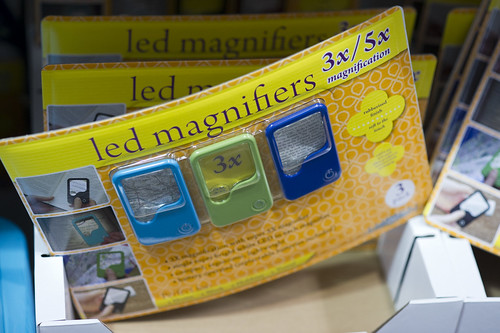
A few notes for the notebook on this essay Visualisation and Cognition by Bruno Latour. In it I found a few points relevant to this idea of *design fiction* — the imbrication of design, science fact and fiction to help imagine and materialize new kinds of near future worlds. The essay certainly isn’t about this directly, but there were some aspects of it that relate ideas to their materialization via visual techniques, specifically *immutable and mobile* visualizations — ways of making ideas travel from one place to another. Film is a means of mobilizing ideas, enrolling more and more allies through an immutable inscription.
Below are my own notes, mostly to myself. I am most interested in what might be extracted from this essay regarding the significance of *visual inscriptions* to change and innovation; and the relationship between *props and prototypes* — are they in a sense one and the same? If they are meant to stand in for *what could be?* This relates to Latour’s points indirectly — he emphasizes the capability of linear perspective and drawing because of their ability to capture an idea and move it from place to place in order to enroll allies and make things happen. It becomes possible to have an idea, render it and effectively bring people to where you have been, by bringing that place or that idea to them without them having to go through the trouble of making the journey on their own. Film, I *think*, can do the same thing and is perhaps the contemporary equivalent of the more historical points Latour makes. This might be a stretch, but drawing and film might be performing similar functions in this regard — allowing an idea to be rendered and to travel without too much hassle.
If I had to summarize the points here, I would draw from this moment in the film Jurassic Park where the high school science film *Mr. DNA* in which a complicated, technical process of extracting dinosaur DNA is explained in an entertaining narrative film. It is a complicated phenomena that is summarized in a compelling visual story. As a function in the film itself, this allows the audience to go on this journey that scientists (curiously, both in the film and external to it, because this hypothesis explicated in the high school science film is an active concept by *real* scientists) are making themselves. Once taken on this journey, the audience can at least temporarily comprehend the possibility that dinosaurs can exist today.
There are two points argued in Latour’s Visualisation and Cognition essay that are relevant for the work here in the Laboratory: the invention of mobile, immutable, presentable, legible objects and; creative visualization — not the data viz stuff that’s all the craze these days (although this is relevant), but new/evolved ways of describing and presenting, not just graphs and tables that visualize *complicated* or *hidden* phenomena that can now be rendered legible because masses of realtime data exist in public databases. But, what I mean more specifically is to leverage an old trick of optical consistency — making impossible places, impossible things realistic, or to make possible objects more probable than other possible objects.
1. The first point Latour makes is to emphasize the significance of writing and imaging craftsmanship in the work of what I will call — innovation. Rather than economic (materialist) or intellectual (mentalist) historical perspectives — the big, overarching views used to describe the specific characteristics of modern technoscientific cultures — the ability and deployment of descriptions and drawings is what allows ideas to evolve in a specific way which is this: not only does writing and imaging allow an idea to move from precisely that — an idea in someone’s head to more material form — it allows that idea to travel without changing; it becomes what Latour calls an “immutable mobile.” However clever or insightful one might be alone, the ability to “muster on the spot the largest number of well-aligned and faithful allies” is the way to win, for example, a confrontation, or to win a decision in one’s favor. (“We need..to look at the way in which someone convinces someone else to take up a statement, to pass it along, to make it more of a fact, and to recognize the first author’s ownership and originality.” [p.5])
As simple (thankfully!) as drawing a map of an island and being able to bring it back to Versailles across a vast distance in order to enter it into the bureaucracies that will debate, decide and declare the best ways to sail to, or attack or colonize that island is far more significant than *only* being able to get to the island in the first place (via the commitment of capital to fund the journey, the ability to navigate via the stars, etc.). One must bring these two perspectives together. It is not enough to be able to do the extreme journey on its own if the extreme journey does not help mobilize and muster new resources.
So..there’s that. It’s not enough to be clever — one must also effectively communicate, in all sorts of ways, beyond only rhetoric.
2. The second relevant point for the Laboratory tails on to the first point: if we want to show possible near future worlds that might tend away from convention, or lean towards speculation we must do so simply, visually and with as effective a description (narrative) as possible. This is the reason why we’ve been very interested in the production of visual stories — not just the stories themselves, but the *how* of their making, specifically the creation of visual stories that may show things that cannot yet occur outside of a visual or written fiction. (c.f. The Reality Effect of Technoscience) Why is this significant? Why does *design fiction* — the imbrication of design, science, fact and fiction — need to show (in the plain sense — visualize, render, draw)? Because “[h]e who visualizes badly loses the encounter; his fact does not hold.” [p. 16-17]
In summary: some things are best shown in order to be thought-through. This is relevant to the point of designing with fiction because we are trying to obtain in a real, material way a near future world which needs a way to compellingly enroll *allies* — supporters, interests, the imagination of people — in order to bring this world into being. This won’t just happen “cause” an idea is a good one. It has to be made good through the enlistment of participants who can be taken on the journey to that near future and then come back with the commitment and belief in this near future.
Two further notes from the essay.
The first is a point that starts the essay out — Latour is looking for another set of characteristics particular to *scientific modernity* (which I rephrase as *technoscientific culture*) that is something other than materialist or “mentalist”. That is, characteristics that are not about the accumulation or attributes of capitalism or economic growth; and not about brains that have grown with the times to allow us to be smarter. (The reasons we make aliens with huge heads.) What he is looking for is a simpler, less controversial (and perhaps less racist) character of technoscientific culture. Rather than the unyielding accumulation of more machines, intellectual property, wealth and so on to support the creation of new technical objects — what is it that allows ideas to generate and propagate? In a word, he looks to drawing — the ability to capture an idea and then mobilize it immutably.
And this is the second point. Perspective drawing is particularly relevant, he argues convincingly. It’s simple — perhaps too simple a description for some people — but compelling. Once something like, for example, a map can be drawn that captures a place and that map can show a place from a vantage point that allows the vantage point to move without changing the place, because of the rules and techniques of linear perspective), one can *move that place, taking that map back to Versailles to show the traders and politicians and aristocracy and bankers — and then..* Similarly with drawing a mechanism for a machine or press or siege weapon, etc. The idea can travel, because the flatness of paper makes this possible, and it can travel without changing because of the techniques of linear perspective — even if you change a viewport, the *thing* does not mutate.
Simple, Not Grand. Perspective over Capitalism.
Latour looks for explanations as to the specific underpinnings of our technoscientific culture in this essay. He describes a rather useful alternative to the two most common and tiresome (because they are so common) descriptions of the origins and special characteristics of modern technoscientific culture: the materialist and the “mentalist”, as he refers to them. The alternatives have everything to do with being able to project in a simple way through *visualization*
Are we really a technoscientific culture because we have become smarter? Or richer in ideas, resources, capital — both financial and intellectual? Rather than the hackneyed descriptions that rely on either a materialists (it has to do with the availability of resources, the unyielding *push* of capitalism to create more, better, faster, smaller), or a “mentalist” (we got smarter and smarter with time, ideas and *innovations* stacking up on top of each other, increasing the *up and to the right* curve of *progress*), Latour starts by wishing to obey the principle of Occam’s razor:
With this set up we are able to look more closely at the simple, less-grand, less dichotomous divides between what was and what follows. Rather than “great divides” between prescientific and scientific cultures that force binaries and strong asymmetries which are useful for children’s bedtime stories (good versus evil; then versus now; us versus the others) but of little use for understanding the evolution of innovation and change, we should find simpler, more subtle explanations that do not strain credibility for their overarching, impossibly broad perspectives that are simultaneously simple. Simple and overarching don’t go well together and do not hold things together very well. They move too far away from the hand, from what people do in the everyday. They do work well for historians and their stories, but not particularly well for the work of craftsmen doing what they do.
Why is this a difficult point to start from? Why are “grand narratives” of innovation and evolution difficult to give up? Is history really a sequence of *disruptions* that suddenly appear from nearly nowhere? As Latour says, “The differences in the effects of science and technology are so enormous that it seems absurd not to look for enormous causes.”
How do you maintain an adequate description of the *scale* of effects but without explaining it through similarly scaled explanations like the history of human consciousness, the development of reason, unyielding accumulation and creation of capital of all sorts? What we want to do is avoid these usual explanations in order to describe innovation in a more empirically precise way, one that does not ignore the practice and craftsmanship of knowing, one that pushes aside omniscient economic and intellectual histories.
Inscriptions Mobilize Immutably
The mobilization of many resources through space and time is essential for domination on a grand scale. Latour proposes “immutable mobiles” as those objects that allow this mobilization to happen and that the best of these had to do with written, numbered or optically consistent paper surfaces(!).
1. Inscriptions are mobile. Things can’t move to other places, but *inscriptions* can.
2. They are immutable when they do move, as much as practical. Perspective enforces this. “..specimens are chloroformed, microbial colonies are stuck into gelatine, even exploding stars are kept on graph papers..”
3. Inscriptions are made flat, two-dimensional. “In politics as in science, when someone is said to master a question or to dominate a subject, you should normally look for the flat surface that enables mastery (a map, a list, a file, a census, the wall of a gallery, a card-index, a repertory) and you will find it.”
4. The scale of inscriptions can be modified. From billions of galaxies in a photograph, scale models of oil refineries the same size as a plastic model of an atom.
5. Inscriptions can be reproduced and spread.
6. Inscriptions can be reshuffled and recombined. (Metaphor and metonymy.)
7. Inscriptions can be superimposed as a result of their ability to be recombined/shuffled.
8. Inscriptions can be made part of a written text. (Captures from instruments merge with published texts; a present day laboratory is the unique place where the text is made to comment on the things which are already present within it. It is not simply “illustrated”, it carries all there is to see in what it writes about. Through the laboratory, the text and the spectacle of the world end up having the same character.)
9. The two-dimensional character of inscriptions allow them to merge with geometry. Space on paper can be made continuous with three-dimensional space.
The summary conclusion here is that writing and inscriptions are crucial characteristics of the technoscientific modernity — these are deceptively simple characteristics and not as grand as the creation of trade, or the invention of fungible currencies, or the invention of the telescope or perspective or a particular war or even the printing press. It is these things, certainly — but together with this ability to describe and to draw and to do so in a way that is mobile and immutable — that can travel back. You can go to the far reaches of the world or the imagination and then come back to show what you mean. And, the simpler, the better. No grand, esoteric explanations.
Why do I blog this?I like this perspective of coming back to simple explanations of things. It seems that complexity or quantity often rule in situations. More words; more data; more user study data; more pages in the PowerPoint. More and more stuff to hide behind before making a decision…and so on. I’ve been more intrigued by the power of a compelling visual description, even for awkwardly speculative perspectives or propositions. This is very similar in my mind to these moments in the design fiction idiom, especially the moment in science fiction films (which may as well be journey’s to other possible worlds) where something fantastical is revealed and the *how* is brought back to us as viewers to allow us to enjoy the film without questioning the *science* that belongs properly to the fiction.
Continue reading Showing And Telling: Some Notes On Visualisation and Cognition
Construction of Things
What was sticking in my mind, and has been recently, and especially after dinner conversation and the lecture which was on Design Fiction with an emphasis on the relationship between props, prototypes, and the normalization/everyday-making of provocative ideas.
A few notes on this point, as reading notes from Latour’s *Reassembling the Social*
Making normal and everyday serves a purpose, I am thinking, in design and in the communication of design ideas.
1. As to the point that it serves the purpose of design, I mean that it brings it into the realm of the familiar, putting something or an experience or a moment into the world and making the engagement *exist* as if it needs no explanation — it is here, and perhaps even it is the case that it is near-obsolete so we can tell a story about its entire life. We defetishize newness and glamour, retreating to the mode of familiar, reliable blandness, as most things go that have lived a full life in the world. If something has not become everyday, chinked on a corner, or experiencing a glitch, or booting a little slowly this time, or making an aged complaint, it has not had a good, long life in the world ((discounting a normative assessment as to what is *good*, or the point that perhaps “it” is new and just crappy and poorly made.)) Which basically suggests it was here for one failed Christmas push and then dropped off the edge of the Earth. Or has just become a cherished relic, or is simply old and worn, but still precious and useful.
2. In the communication, making something everyday is meant to suggest that it has become part of life — perhaps not everywhere, which is not always the goal, nor is ubiquity. But, ‘part of life’ suggests that it’s a good idea and the effect is to communicate as much as this — that it could have been here, around and with us. The communication normalizes the thing to the point of routine blandness. Whether this happens by association or more directly is significant. In the communication, don’t have people smiling with glee when operating/experiencing/discussing the thing, and don’t explain what is going on as if the communication is a features-and-functions list. Didactic and apologetic explanations are a poor substitute for a well-designed thing that expresses itself through a story or fits into everyday life without a list of “whys” or “whats.” Cinematically speaking — *show it, don’t tell it.* Let the communication describe if it needs to — but don’t explain. If you still need to explain something, you need to *explain* in the material — go back and iterate the design. The explanation should be the product of the design, not a way of substituting for an opaque object — the materialization of your ideas in the object/thing/service/widget should effervesce from the communication.
3. Rather than the design tactic of spectacle-making, what about making things normal so that designs move into their place in the world, perhaps even moved off to the utility drawer of the world to become either quaint or so routine and everyday that they are taken for granted. Like a AA battery. No one every made much of a spectacle of those things, except maybe Madison Avenue, once, together with a phalanx of Rabbit troubadours.
4. I am wondering about implementations and ideas that are two-way props/prototypes. A design tactic that is encouraged to go into the future by materializing new ‘near future worlds’ and then come back into the past, as in an archeological unearthing and investigation and un-constructing of what is around us today. On the one hand, forward-into-the-future design creating new worlds that are hopefully better than the ones we have today. On the other hand, taking what we have today and describing it in the way of sociology-of-associations, anthropology, science studies, &c. Dig something up that once existed and tell its story — or mis-tell it for the purpose of showing how a thing can be re-inscribed with unexpected contexts so as to remind us how significant the interaction and the experience is in making the object meaningful.
So..what? Why this strategy for design and communicating a speculation, or an idea, or something future-fictional?
**To help imagine what things will become and to defetishize the things that are normally elevated beyond themselves — like when new gadgets are oogled and ahhhhgle’d and beyond what they deserve because, ultimately, at some point, it all becomes crap that’s thrown out anyway. (The Near Future Laboratory Defetishization Bureau recently issued a Fatwah on all ‘unpacking’ blog posts and descriptions.)**
In plain English, to say something is constructed means it’s not a mystery that has popped out of nowhere, or that it has a more humble but also more visible and more interesting origin. Usually the great advantage of visiting construction sites is that they offer an ideal vantage point to witness the connections between humans and non-humans. Once visitors have their feet deep in the mud, they are easily struck by the spectacle of all the participants working hard at the time of their most radical metamorphosis. This is not only true of science but of all the other construction sites, the most obvious being those that are at the source of the metaphor, namely houses and buildings fabricated by architects, masons, city planners, real estate agents, and homeowners. The same is true of artistic practice. The ‘making of’ any enterprise — films, skyscrapers, facts, political meetings, initiation rituals, haute couture, cooking — offers a view that is sufficiently different from the official one. Not only does it lead you backstage and introduce you to the skills and knacks of practitioners, it also provides a rare glimpse of what it is for a thing to emerge out of inexistence by adding to any existing entity its time dimension. Even more important, when you are guided to any construction site you are experiencing the troubling and exhilarating feeling that things could be different, or at least that they could still fail — a feeling never so deep when faced with the final product, no matter how beautiful or impressive it may be.
Latour, Reassembling the Social [p88-89]
Also, consider failure and its opportunities. Cf. Nicolas Nova on failures. Failures are situations that reflect on the assembly of things — err – their disassembly or their accidental destruction in a perhaps inglorious fashion.
But still — why do we want to see the made-ness of things this way? Is there more to be seen below the surface that reveals..what? The possibility of reconnecting things in other ways? That reveals the contingency of the construction — who was involved? What they did? Where the principles and sensibilities and politics of the thing are? Why was this fastener chosen over another possible one? To make it more secure and stable? Or to make the BOM cheaper and more likely to fly apart when dropped? Can you point to a part and say something about the principles of the design?
One insight from Latour that reflects on the importance of revealing the in-progress, in-construction aspect of things — things disassembled, or in exploded-view. These sorts of indicators of construction, constitution, assembly suggest a made-thing — which we always know if pressed that everything must be. Showing the components in-assembly or in-explosion suggests to us that this could have been done differently.
Why is this important?
Momentary Visibility Ways of bringing the associations amongst things into view. “Social” is a fluid visible only when new associations are being made..a brief flash which may occur everywhere like a sudden change of phase.
Why make the social visible?
Develop and execute — is this the preferred pattern of constructing things? No? Rather, might a more considered approach that learns lessons all the way down be design as perpetual iteration?
A list of situations where an object’s activity is made easily visible
Fortunately, it is possible to multiply the occasions where this momentary visibility is enhanced enough to generate good accounts. Much of ANT scholars’ fieldwork has been devoted to trigger these occasions..
1. Study innovations in the artisan’s workshop, the engineer’s design department, the scientist’s laboratory, the marketer’s trial panels, the user’s home, and the many socio-technical controversies.
2. Second, even the most routine, traditional, and silent implements stop being taken for granted when they are approached by users rendered ignorant and clumsy by distance — distance in time as in archaeology, distance in space as in ethnology, distance in skills as in learning.
3. The third type of occasion is that offered by accidents, breakdowns, and strikes: all of a sudden, completely silent intermediaries become full-blown mediators, even objects, which a minute before appeared fully automatic, autonomous, and devoid of human agents, are now made of crowds of frantically moving humans with heavy equipment.
4. Fourth, when objects have receded into the background for good, it is always possible — but more difficult — to bring them back to light by using archives, documents, memoirs, museum collections, etc., to artificially produce, through historians’ accounts, *the state of crisis in which machines, devices, and implements were born.*
5. Finally, when everything else has failed, the resource of fiction can bring — the the use of counterfactual history, thought experiments, and ‘scientification’ — the solid objects of today into the fluid states were their connections with humans may make sense. Here again, sociologists have a lot to learn from artists.
Latour, Reassembling the Social [p.80-82]
What is relevant here – possible tactics for design, assuming something has been made, without making it, and back-tracing the ‘controversies’ of its assembly. Assume you have only fragments of ‘what the thing was’ or ‘what the thing will have been’ and unpack it as an investigator/sociologist-of-associations/anthropologist/archeologist-of-associations; track back through the associations and construct what it might have been.
However, we worry that by sticking to descriptions there may be something missing, since we have not ‘added to it’ something else that is often called an ‘explanation’. And yet the opposition between description and explanation is another of these false dichotomies that should be put to rest — especially when it is ‘social explanations’ that are to be wheeled out of their retirement home. Either the networks that make possible a state of affairs are fully deployed — and then adding an explanation will be superfluous — or we ‘add an explanation’ stating that some other actor or factor should be taken into account, so that it is the description that should be extended one step further. *If a description remains in need of an explanation, it means that it is a bad description.*…As soon as a site is placed ‘into a framework’, everything becomes rational much too fast and explanations beging to flow much too freely. The danger is all the greater because this is the moment most often chosen by critical sociology, always lurking in the background, to take over social explanations and replace the objects to be accounted for with irrelevant, all-purpose ‘social forces’ actors that are too dumb to see or can’t stand to be revealed. Much like ‘safe sex’, sticking to descriptions protects against the transmission of explanations.
Latour, Reassembling the Social [p. 137]
So..what? Why do I blog this?
Is there anything about the sociology-of-associations and Actor-Network Theory that can become a part of a design practice that does more than incremental innovation? Or, what does the sociology-of-associations and ANT have to say about design practice? Why might it? Because ANT concerns itself with the making of things — or, also, the un-making to implicate practice in the creation of stabilized systems. Here, at the Laboratory, we are makers of systems that stabilize and cannot see how it would not be beneficial to understand how these systems stabilize — or at least to have an articulate point of view on how an idea hatched in California plops off the end of an assembly line 15 times a minute, 11 months later, and then get buried in the ground 24 months after that. And, if you understand — or have one or two of many possible articulate points-of-view on this — you have a better grasp on how to do this better, or perhaps how to decide in particular situations how not to do this, or how to design differently so that we don’t drown in things coming off of assembly lines 15 times a minute..only to end up filling land 24 months after that.
Tangled Knots
Found in the Itaewon neighborhood in Seoul — a tangled web of the old carted off to make way for the new. The muck and mess of an old building taken away and hidden off in a landfill or perhaps it will be smashed, melted and repurposed. That tangle could be good steel if redone. I can think of no more appropriate physical metaphor for the ways in which things made become something else again, in time. The intractable tangle and knotted hair ball embodies the history — Latour’s “knots” and “entanglements” are more apropos of the complexities of social collectives than the finished, burnished glass-and-steel that will likely replace whatever had been here in this spot.
I often get peculiar looks when photographing these sorts of half-built/half-broken objects and crap — definitely not tourists sights. For the most part, these sorts of things are compelling physical metaphors of ‘social assemblages’ — the things that hold us all together. Seeing them in “ruined” form and not as generically photogenic resonates the “made” qualities of the world around us, and brings to the foreground the sense that the world is constructed and always in process — always changing, always being re-made.
Perhaps the most concise appreciation or understanding of what “the social” is can be seen in this image — it is what holds us together, and not the result of that ‘holding together.’ But, it is more than a physical metaphor because we should not, to paraphrase from Latour, limit what gets to participate in ‘the social’. That is, it is not only people — humans — who do the structural holding-together. Things, as well — things of all sorts participate as much as normal (and not-so-normal) human beings shape and mold and vector the entire collective, stretching it into odd shapes and enrolling all kinds of human and non-human ‘hybrids’ into something new. A good reason to think about new ways to map these associations and assemblages with things other than just people, for example.
Why do I blog this? I find myself again reading Reassembling the Social: An Introduction to Actor-Network-Theory (Clarendon Lectures in Management Studies) simultaneous with The 33 Strategies of War (Joost Elffers Books)
so as to gain additional (perhaps better? perhaps ultimately worse?) perspectives and points-of-view on the ways social-technical assemblages function and survive. A mix of tactics and strategies to create these assemblages, which always look more disciplined in their final presentation, but are always somehow much more intriguing in the process of their making. The ways things come to be is always much more than the technical particulars of their components, which is a point I think I misunderstood until my first professional job designing mini-computers while the mini-computer industry was well into its tumble off the cliff created by the X86 and 68000 architectures. Shifting into new territories requires epic degrees of flexibility, insight and guile perhaps above all. Luck, I am fairly certain, has nothing to do with responding successfully and reacting quickly to system altering changes.
Continue reading Tangled Knots
Merit Badges for Things
I was awed for some reason today by this power brick for a Lenova ThinkPad thingie. The assemblage of certifications, warrants and authentication badges almost defines how large the brick can be. What this made me think of is the thicket of contested hurdles objects and devices must vault over in order to become certificated, first-class citizens in the world. Each of these indications are backed, I’m fairly sure, by thick volumes of rules, parameters, minimums and maximums and costs for laboratory verifications, all part of the knotted assemblages of social-political-technical blessings that make a thing into a Thing.
Why do I blog this? Been reading and listening to quite a good bit of Latour these days. Stumbled across this from Peter Ryan, a Ph.D. student at the University of Toronto while looking for Latour’s statements about visualization.
Continue reading Merit Badges for Things
Theory Objects & Design Patterns
This “Theory Object” business — I’m trying to work out what it might mean through practice, through the activity of making things. As Bruce Sterling said in his wonderfully rabinical talk at SXSW just the other day, “A Theory Object is a kind of Theory Object.” It’s got that geeky recursion, like GNU — GNU is Not Unix.
I’m going to try and parse that for a spell — A Theory Object is a kind of Theory Object.
I think there’s a good reason for a Theory Object being a kind of Theory Object, and it’s about design patterns for design itself, another recursion. But this isn’t a recursion puzzle land for the sake of geeky fun. There are important stakes in this approach, that operate at a number of levels, but mostly around the area of creating a world that won’t ruin itself any more than it already has. How do you do that? Maybe there’s a design pattern that’ll help — an approach to making things that matter.
Jystar, a computer science grad student down at UC Irvine, wrote a post on the topic of Theory Objects that made me think about the “frameworks” used to make things, like software-based systems. In the software engineering idiom, where I have some stakes and a bit of background, one often hears about frameworks or design patterns as models to help get things done. They’re super useful, and they help move from an idea to an articulation of that idea because some of the larger pieces of the software design as well as the small glue have been throught through in the form of “design patterns” and such all.
Design patterns create standard frameworks for solving problems. They provide a common language for sharing approaches to work , which makes getting things made easier. You can convey a whole lot of information by referring to patterns when your colleagues know what you’re talking about.
Continue reading Theory Objects & Design Patterns
A Manifesto for Networked Objects — Cohabiting with Pigeons, Arphids and Aibos in the Internet of Things
One of my pieces of “output” from the workshop on Blogjects/Networked Things that Nicolas and I put together is the document contained herein. (BTW, we’re very close to having our more formal workshop “write-up” completed.) It started out as some scribblings on what I learned from the workshop, seeing the groups’ projects, and so forth. It then grew into more of a polemic as I recognized what were some consequential stakes — why things would matter, or help, if Things were networked? Why would I want a world such as that? And how would I design interactions for such a world?
I didn’t want to lay low and play the engineer who might just geek out on the technology behind networked Things (I do.) I didn’t want to lay low and play the social scientists and just geek out on theorizing or studying how engineers make and how social beings interact in a world of networked Things (I do that, too). I wanted to start by creating a near-future kind of technology fiction about one particular set of design goals for a world in which networks pervades space and social practice and in which networks are co-occupied by slightly differentiated social beings — us and Things.
What would I want from such a pervasively networked world? A better bead on what the state of that world is that is impactful. Hence, my stumbling about trying to describe a world of networked Things that aren’t only around to help track packages, but are around to help create a world-wide accessible register of various real-time “feeds” of macro and micro states of the social and ecological environment.
This is not complete and the translation of my ideas to a progression of articulate words sometimes feels like someone who slips on the ice for about 20 minutes and refuses to give up the struggle and just fall down to save themselves the mounting embarassment.
Abstract: The Internet of Things has evolved into a nascent conceptual framework for understanding how physical objects, once networked and imbued with informatic capabilities, will occupy space and occupy themselves in a world in which things were once quite passive. This paper describes the Internet of Things as more than a world of RFID tags and networked sensors. Once “Things” are connected to the Internet, they can only but become enrolled as active, worldly participants by knitting together, facilitating and contributing to networks of social exchange and discourse, and rearranging the rules of occupancy and patterns of mobility within the physical world. “Things” in the pervasive Internet, will become first-class citizens with which we will interact and communicate. Things will have to be taken into account as they assume the role of socially relevant actors and strong-willed agents that create social capital and reconfigure the ways in which we live within and move about physical space.
To distinguish the instrumental character of “things” connected to the Internet from “things” participating within the Internet of social networks, I use the neologism “Blogject” — ‘objects that blog.’
Technorati Tags: blogjects, RFID, The Internet of Things, world 2.0, world2.0
